Whether you’re a racing cyclist or a recreational rider, improving your cycling performance can be challenging. Mastering the perfect pedal stroke is one of the most important factors in unlocking your cycling potential. The pedal stroke is the foundation of your cycling technique and can make all the difference in your speed, endurance, and overall performance. But what exactly is the perfect pedal stroke, and how can you achieve it? In this article, I’ll reveal the secrets behind the perfect pedal stroke and provide practical tips and techniques to help you improve your cycling performance. So, whether you’re a competitive cyclist or a recreational rider, get ready to unlock your cycling potential and take your riding to the next level!
Imagine you’re riding with your cycling friends on a social ride, and you hit a hill. As it steepens up, you start having to put more and more power into the bike. You look around at the other riders you’re riding with, and they seem to be managing it with ease while you’re starting to struggle. Then it happens. You start losing contact with the front riders, and you have been dropped within seconds. You climb the rest of the climb the best you can, all the while thinking there must be something you can do with your training to enable you to stay with the faster riders.
While many factors go into building power on the bike to stay with faster riders in fast moving bunches and on climbs, one of the things overlooked is improving your pedalling technique and efficiency. Whether you are a recreation rider or a racing cyclist, efficient pedalling is critical to helping you develop strong and sustained power on the bike. And by doing so, you can manage the demands of whatever you encounter on your rides.
Understanding the mechanics of a pedal stroke
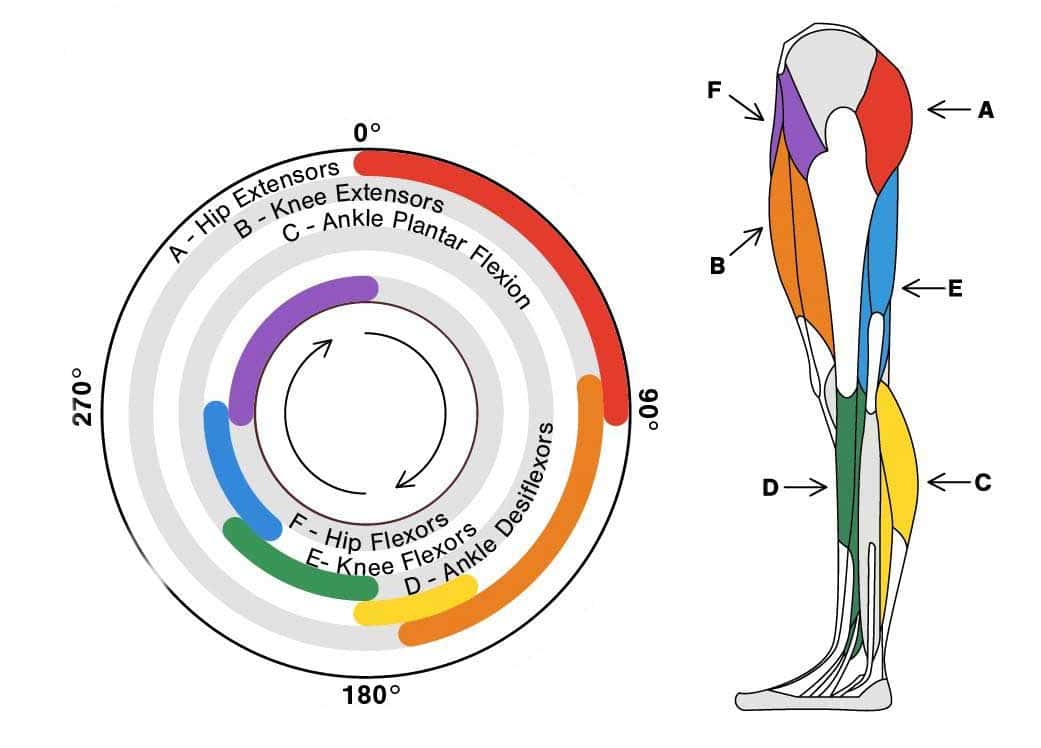
Image sourced from: https://www.pinkbike.com/news/which-muscles-are-really-used-during-the-pedal-stroke-2012.html
The pedal stroke is the action of turning the pedals to move the bike forward. A perfect pedal stroke is a smooth, efficient, and powerful motion that maximises your energy output while minimising stress on your body. To understand the mechanics of a pedal stroke, we need to break it down into four phases: the downstroke, the bottom part of the stroke, the upstroke, and the top of the stroke.
The downstroke is the phase where the pedal is pushed down from the two o’clock position to the four o’clock position. The bottom part of the stroke is when the pedal moves through the lowest point from the five o’clock to the seven o’clock position. The upstroke is the phase where the pedal is moved from the 8 o’clock position to the ten o’clock position. Across the top of the stroke from the eleven o’clock to the one o’clock position is when the pedal moves through the stroke’s highest point.
A perfect pedal stroke involves a smooth and even power distribution throughout all four phases, maximising your energy output and minimising fatigue. It’s essential to avoid any jerky or sudden movements, as they can waste energy and cause unnecessary stress on your body.
Also, you need to stabilise your power through the downstroke, top, and bottom stroke to efficiently and repetitively produce maximum power.
Common mistakes in the pedal stroke and their impact on performance
Many cyclists make common mistakes in their pedal strokes that can impact their performance. One of the most common mistakes is relying too much on the downstroke phase, neglecting the top and bottom stroke phases, and wasting energy. Another mistake is bouncing on the saddle, which is caused by not transitioning smoothly through the bottom part of the stroke, causing wasted energy and sometimes discomfort.
These mistakes can lead to decreased efficiency, fatigue, and injury. By identifying and correcting these mistakes, you can improve your pedal stroke, increase your speed, and reduce your risk of injury.
Benefits of a perfect pedal stroke
Mastering the perfect pedal stroke has numerous benefits. Firstly, it increases your efficiency, allowing you to produce more power with less effort. This efficiency means you can cycle for longer distances, at higher speeds, and with less fatigue. Secondly, it reduces your risk of injury by minimising stress on your joints and muscles. Thirdly, it allows you to climb hills more easily, as you can use your leg muscles more efficiently.
Exercises to improve your pedal stroke
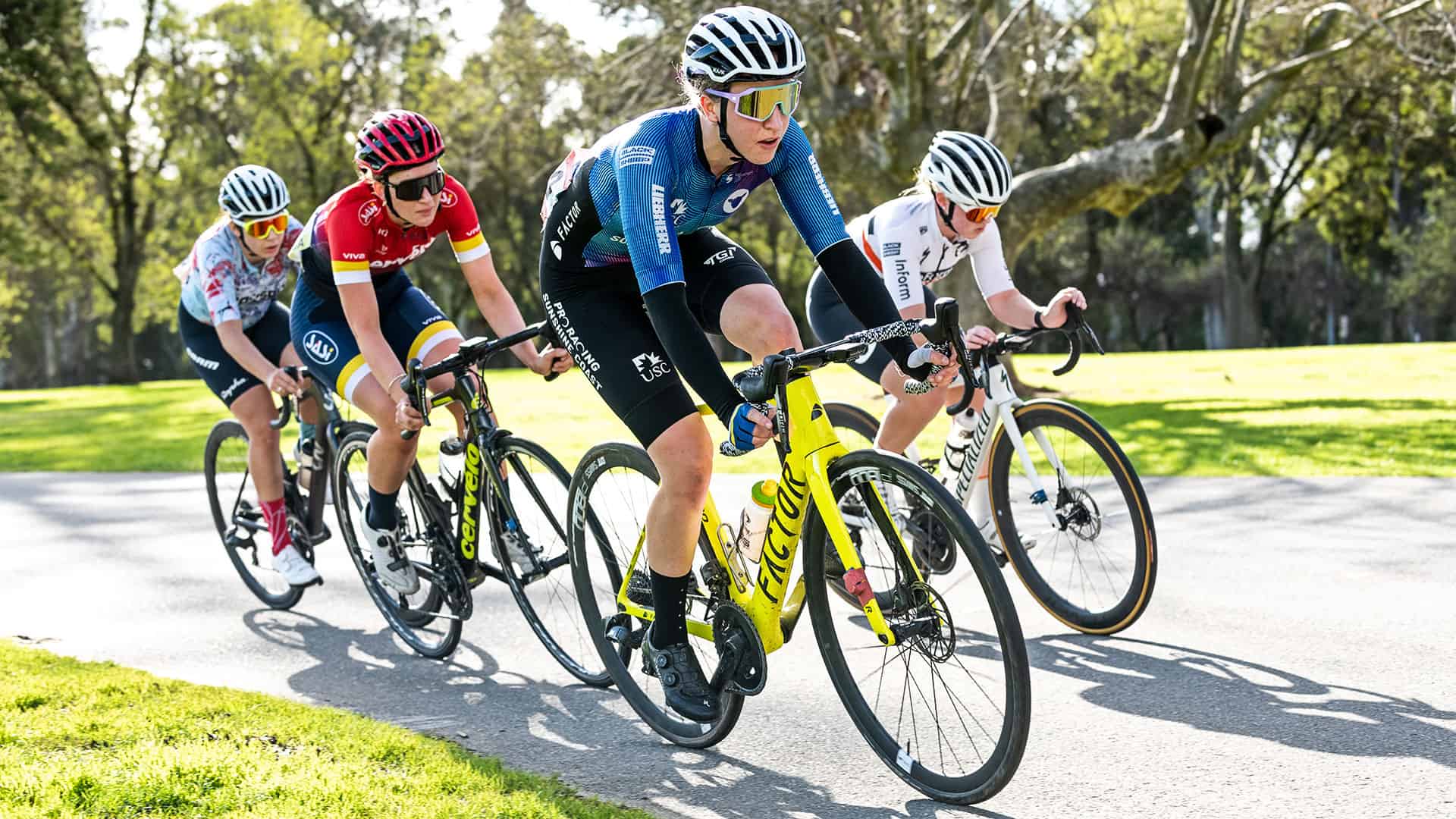
Whether you’re a racing cyclist or a recreational rider, mastering the perfect pedal stroke is one of the essential factors in unlocking your cycling potential.
To perfect your pedal stroke, you don’t need an expensive watt bike electronically analysing your pedal stroke or a person in a white coat to analyse the data to tell you what’s going wrong.
I’ve successfully taught my pedalling technique to hundreds of cyclists. The following technique is the foundation for all the specific pedalling drills incorporated into all the customer training programs I create for my clients to help them master their pedal stroke and efficiency.
The first thing to do is get yourself well-grounded on the seat. Please try this. Jump onto your bike on the road or home trainer. Sit on the saddle, ground yourself to your bike, relax your grip on the handlebars and start pedalling.
Now you’ll want to start pedalling around in circles with a bit of load while locking your core. Imagine that you’re driving your bike only from your hips and core. Pay particular attention to scraping your foot through the bottom of the stroke as if scraping chewing gum off the sole of your shoe. Once you have that sorted, focus on the top of the stroke, particularly on dragging your foot over the top.
Now put it all together and try to pedal through the full stroke, over the top, down through the stroke, and then finish it off by dragging your foot through the bottom. Now repeat.
Remember, when seated, you’ll want to use the back part of the stroke as the recovery part (it’s different when standing). So, lifting your foot in the back part of the stroke is unnecessary.
You’ll first notice that you can only do this with your core locked. Work on keeping your hips as stable and as straight as possible. Let your legs drive from this stable platform, and have your hands rest lightly on the handlebars. It’s hard work when you start doing it for the first time.
Most people only have enough strength to keep it going for around 15 seconds. I’ll watch them in our studio slipping in and out of this technique when they do it for the first time.
So, your goal is to work on this technique on every ride you do until you can do it for hours. It may take you months, maybe years. But as you master this, you’ll find a heap of climbing power you never knew.
This is a huge technique that will help you with your cycling. You’ll need to practice this technique on every ride you do for many months, maybe even years, to perfect it. But it will be worth it and turn you into the best cyclist you can be. Remember that while you may know how to pedal efficiently, it takes quite a bit of time to physically perfect the neurological recruitment and muscle firing, core stability and strength to perfect your pedal stroke through training. That’s why we emphasise specific training drills and workouts to accelerate this process in our online training centre and all the training programs and coaching we provide.
I can’t stress how important this is. It is guaranteed to improve every single aspect of your riding.
You can do specific cycling workouts to develop this core strength and pedalling technique. These workouts, when combined with cycling specific off-the-bike functional strength exercises, help you to master this and dramatically improve your pedalling efficiency and the power that you can deliver into the bike. In my custom training programs, I provide specific drills and off the bike strength training exercises that specifically focus on these areas.
One of the sessions we give all of our clients is the 110 – REC E1 workout. It’s a high cadence workout for recovery designed to help smooth out pedalling technique and improve pedalling efficiency.
An example of a session to improve pedalling efficiency is the 110 – REC E1 workout.
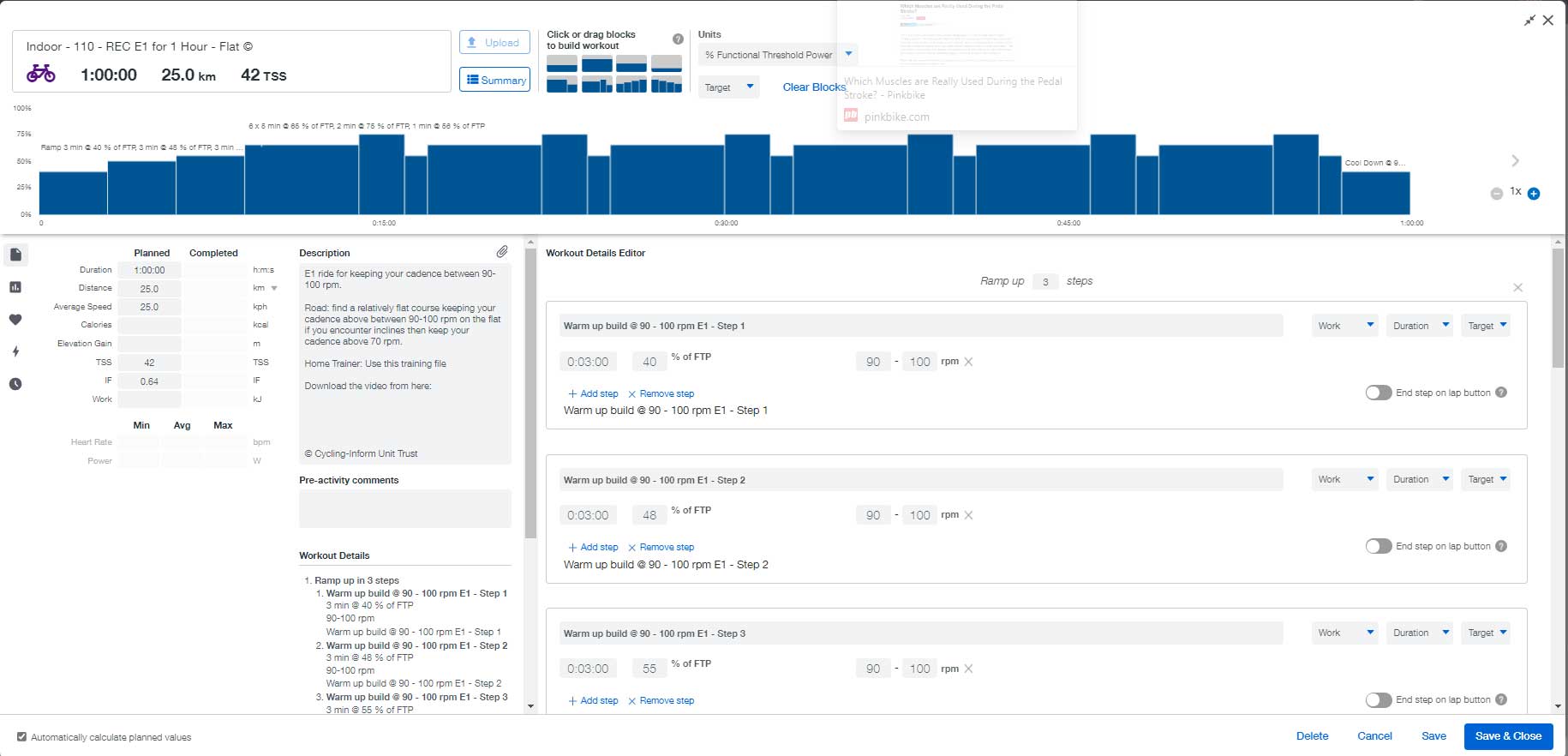
Done at higher cadences, the 110 – REC E1 workout helps you develop pedalling efficiency and smooth out your pedal stroke while providing active recovery between harder training sessions.
Specific pedalling drills at different cadences
You may have heard about the importance of doing specific pedalling drills at different cadences and how it’s a scientifically proven method to improve your cycling power and efficiency.
When discussing different cadences, we refer to the number of pedal revolutions per minute (RPM) a cyclist can maintain. The most common cadence range is between 80-100 RPM, but pro cyclists can maintain much higher cadences, sometimes up to 210 RPM.
Now, why is it important to do pedalling drills at different cadences? The answer is that different cadences recruit different muscle fibres in your legs. For instance, a high cadence of 100 RPM and above recruits muscle fibres responsible for endurance and higher power output. On the other hand, a low cadence of 60-70 RPM recruits muscle fibres responsible for explosive power and strength.
You can train and strengthen both types of muscle fibres by doing specific pedalling drills at different cadences. This will not only lead to an increase in your cycling power but also improve your overall efficiency. Additionally, it will reduce the risk of fatigue and injury, common among cyclists who do not vary their cadences.
You can incorporate varying your cadence into your training routine with specific pedalling drills. I have a range of specific workouts that I build into the custom training program that I create for my clients that train specific cadence ranges and are designed to simulate real life cycling scenarios like bridging gaps, rolling powerful turns in a fast moving bunch, managing surges in fast moving bunches and climber both long extended climbs and short, punchy steep climbs.
Doing specific pedalling drills at different cadences is vital to cycling training. It improves your cycling power and efficiency and reduces the risk of injury and fatigue. So, the next time you hit the road, vary your cadences and incorporate specific pedalling drills into your training routine.
When working with our custom program clients, we ensure that we provide them with workouts that span a broad range of cadences to ensure that they get the best training result with the limited time they have to train.
An example of a custom training program built in Training Peaks
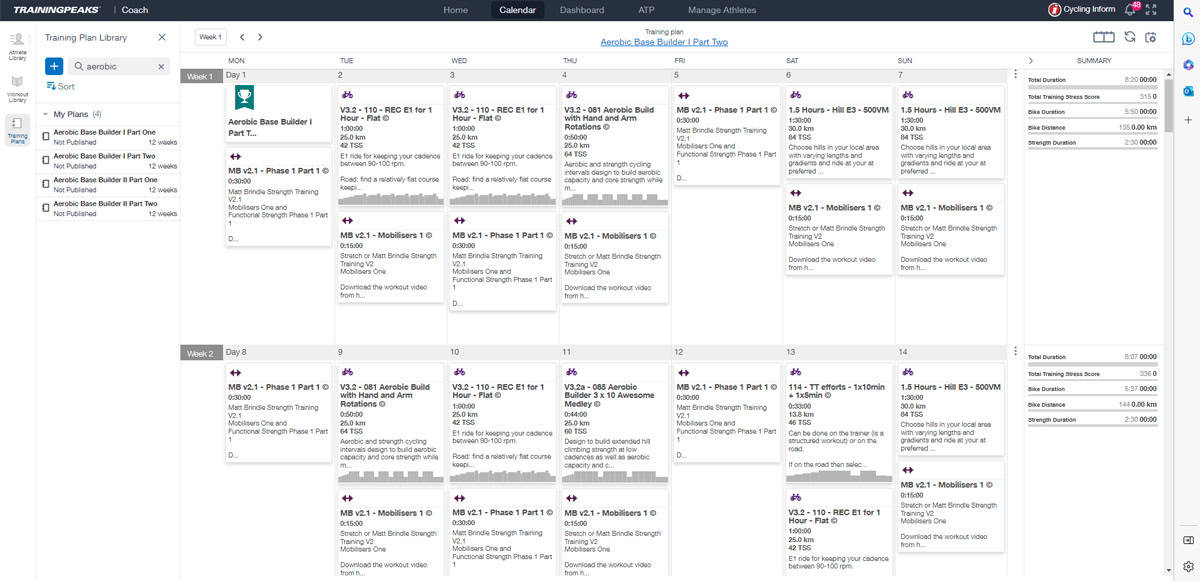
Here is an example of an aerobic base-building training programs focusing on building your aerobic base. It provides the appropriate mix of workouts, recovery and rest to optimise your training. It also details proper cadences and has the classic three week build, one week recovery training cycle built into it to manage your training load. This helps you develop your functional threshold power (FTP) and Chronic Training Load (CTL) while managing your Training Balance Score (TSB).
Importance of proper bike fit for a perfect pedal stroke
Proper bike fit is critical to achieving a perfect pedal stroke. If your seat is too high or too low, it can affect your pedal stroke, reducing your efficiency and speed. When getting fitted on the bike, consider your saddle height, saddle position, handlebar position, and pedal position. Adjustments to these factors can improve your pedal stroke and reduce the risk of injury and fatigue. Many bike shops provide a basic bike fitting service to get you started.
I recommend consulting a professional bike fitting specialist to optimise your cycling position. Choosing a specialist with expertise in your cycling discipline is essential, as different cycling events require different setups. These disciplines include triathlon/time trial events, road riding, track, and mountain bike. A professional bike fitting expert can help you achieve the best cycling position for your needs.
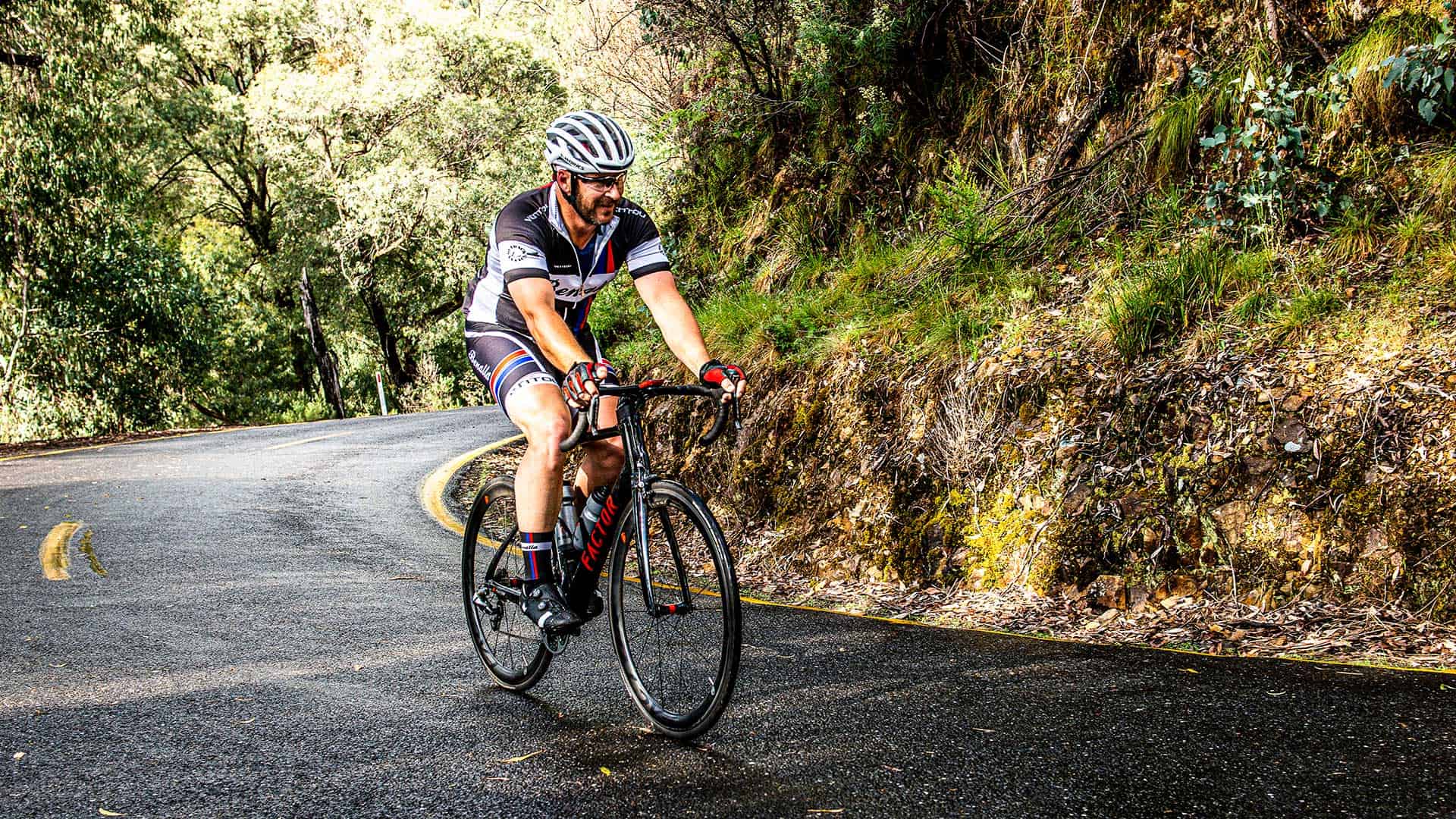
Pedalling efficiency can considerably improve your hill climbing by making you more efficient and able to develop sustained power for longer climbs and punchy power for shorter, steeper climbs.
Conclusion and next steps to improving your pedal stroke.
Mastering the perfect pedal stroke is crucial to unlocking your full potential on the bike. You can improve your cycling efficiency, speed, and endurance by understanding the mechanics of a perfect pedal stroke, identifying and correcting common mistakes, and incorporating exercises and drills into your training routine.
It’s so crucial that we heavily emphasise proper pedalling techniques in all the training resources that we provide to our clients.
Where To From Here
For further help with your training, you can get a customised training program created exclusively for you to help you build, taper and peak for your events and fit around your family and work commitments. Check out our custom training program service here.
Check out the results we have been getting for our clients here.
If you need help, click here to contact me.
Other articles that may be useful
Aerobic Base Training for Cyclists: The Benefits and Strategies of Base Training
Indoor Cycling Workouts – Choosing the Right Workout To Maximize Your Performance
How to Adjust Your Bicycle Seat Height
How to Optimize Your Cycling Performance – A Guide for Avid Riders

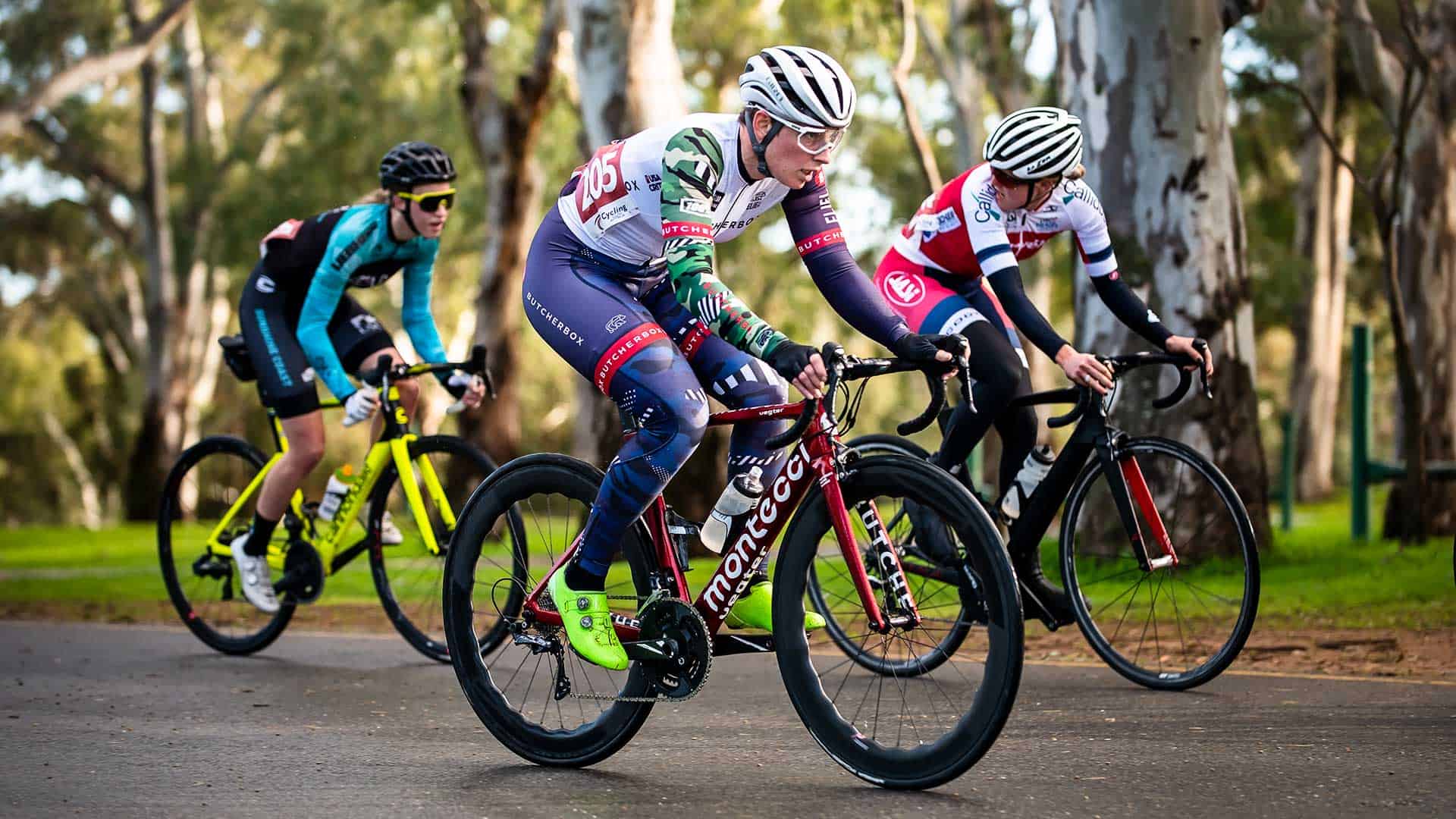




Leave A Comment